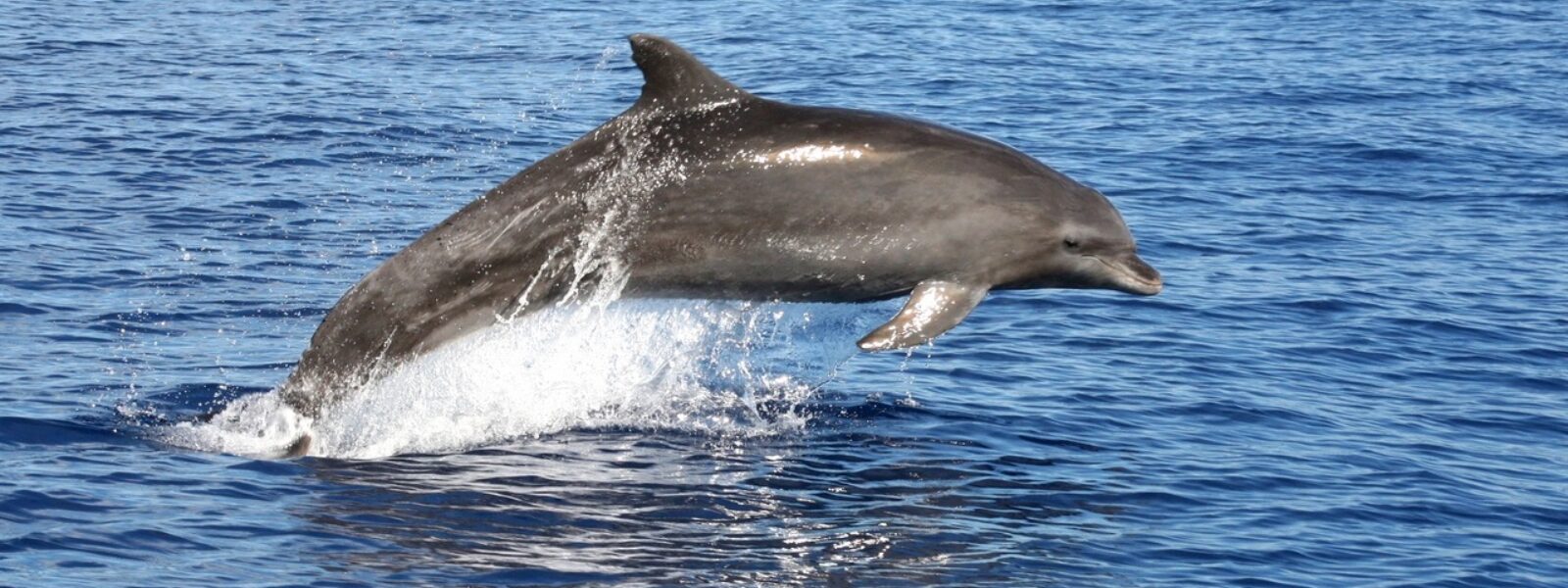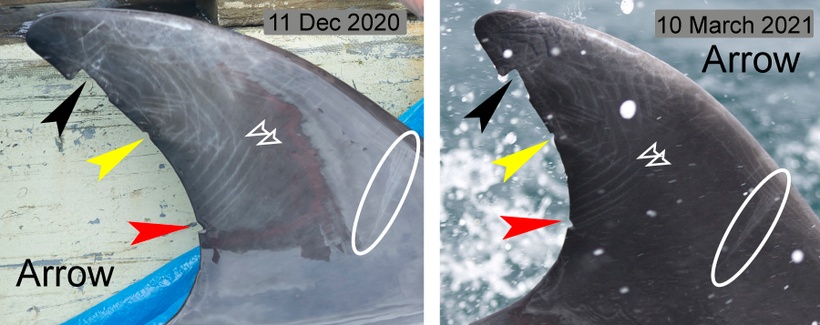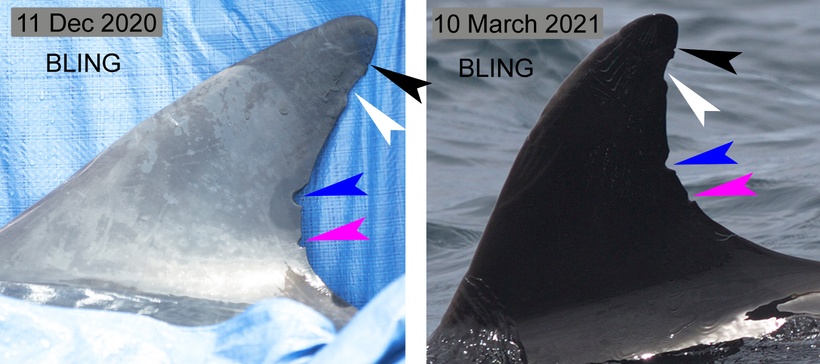

Dr. Ingrid Visser is one of the foremost experts on orcas in the world, having studied them extensively in New Zealand through her Orca Research Trust. She has worked on marine mammal research and protection all around the world, including working with the International Marine Mammal Project of Earth Island Institute. We are pleased to bring you this special report from her about the successful rescue of two stranded dolphins.
On 10 Dec 2020 two male dolphins (Arrow & Bling) became stuck on the mudflats in the Mahurangi Harbor.
Recently, while out on the Orca Research Trust boat, the Whale Rescue and dodoland (EUGY) teams spotted a group of dolphins heading north, near Whangarei Heads. Within just moments of them approaching the boat, we recognized Arrow and immediately began taking photos, in the hopes of documenting him. As soon as we captured him on camera, we sent the image off to Joanne (Floppy) Halliday (who has been documenting the dolphins in the Bay of Islands for over 30 years), to confirm it was him.
While that was underway, we kept taking photos of the other dolphins (at least 15 in the group) and sure enough, we found Bling too (Floppy has also confirmed the match for him).
The distance between the two locations – the site of the stranding and the area of re-sighting the pair – is only 90 km, so it is unlikely that they have remained in this small bit of coastline for the past 90 days. Although the Bay of Islands is a zone that these dolphins commonly hang out in, we are not aware of any sightings of either Arrow and Bling in that area since the stranding. So, it remains a mystery as to where they have been.
The other dolphins they were traveling with during their re-sighting are well known, and they have been seen with Arrow and Bling many times before. Like Arrow and Bling, they also spend a lot of time in the Bay of Islands.
Several studies have looked at the survival success after rescue for stranded dolphins. One aspect that is considered important is if an animal reintegrates with its social network. We can certainly confirm that is the case here, for both Arrow and Bling!

We again extend our thanks to all those involved in the rescue of these two dolphins – and emphasize that taking photos of all stranded whales and dolphins is a vital part of the rescue, especially photos of those parts of the animal that are identification keys, to confirm that the individual has survived.

The International Marine Mammal Project has posted a series of blogs about other successful release programs for dolphins and whales:
"Dolphins Held Captive For Decades Successfully Released"
"The Welcome Home Project of 1990 Send More Dolphins to Freedom"
The International Marine Mammal Project continues to work to improve the survival of whales and dolphins, with emphasis on ending whaling and dolphin hunts, ending the captivity of whales and dolphins, cleaning up plastic pollution, stopping the entanglement and drowning of cetaceans and other marine life in fishing nets and lines, and protecting the ocean habitat from offshore oil drilling and other impacts. We hope you will donate to our work to continue the protection of whales and dolphins around the world. Thank you!